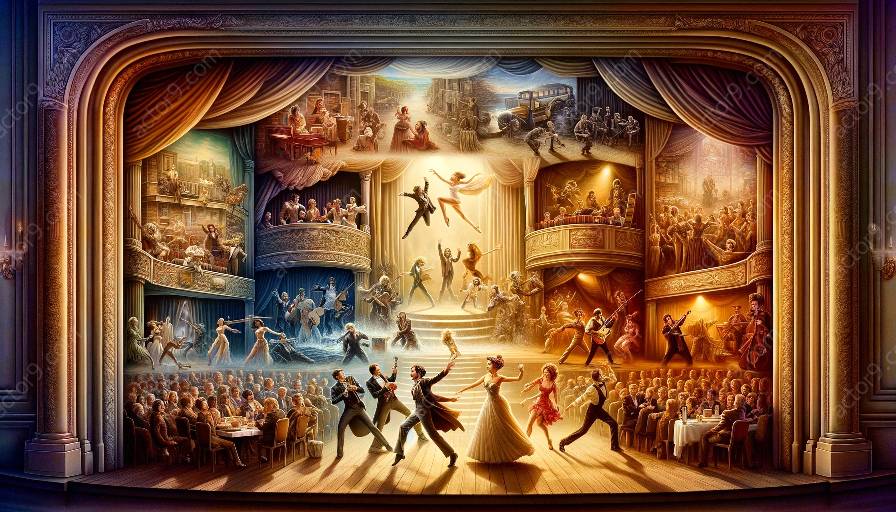Enhancing character portrayal with dialects and accents in musical theatre is a fascinating yet intricate art form that adds depth, authenticity, and cultural richness to the characters portrayed on stage. This topic explores the diverse ways in which these linguistic elements can be utilized to elevate musical theatre performances across different styles and genres, enhancing the overall storytelling and immersive experience for the audience.
The Role of Dialects and Accents in Character Portrayal
When it comes to musical theatre, the portrayal of characters goes beyond mere singing and acting. Dialects and accents play a crucial role in shaping the identities and backgrounds of the characters, bringing them to life in a more nuanced and compelling manner. Whether it's a classic Broadway production, a contemporary musical, or a culturally specific show, the use of dialects and accents can significantly contribute to the authenticity and emotional resonance of the characters.
Authentic Representation
One of the key benefits of incorporating dialects and accents into character portrayal is the ability to authentically represent diverse cultures and regional backgrounds. By accurately portraying the linguistic nuances of a character's heritage or upbringing, performers can effectively communicate the character's identity and experiences, fostering a deeper connection with the audience.
Character Development
Furthermore, the use of dialects and accents can aid in the development of characters, providing valuable insights into their social status, education, and origins. Whether a character speaks with a Southern drawl, a British RP accent, or a distinct urban dialect, these linguistic choices can contribute to the audience's understanding of the character's backstory and motivations, enriching the overall narrative of the musical.
Compatibility with Musical Theatre Styles and Genres
It's essential to recognize the compatibility of dialects and accents with various musical theatre styles and genres, acknowledging how these linguistic tools can be seamlessly integrated into different productions to enhance character portrayal and storytelling.
Classic Broadway Musicals
In classic Broadway musicals such as 'My Fair Lady' or 'West Side Story,' the use of dialects and accents serves as an integral part of character depiction. From the Cockney accent of Eliza Doolittle to the Puerto Rican dialect of the Sharks, the authenticity of these linguistic elements contributes to the dynamic portrayal of characters within their respective cultural contexts.
Contemporary Musicals
Contemporary musical theatre productions, including shows like 'Hamilton' or 'In the Heights,' often feature characters from diverse cultural backgrounds. In these instances, the use of dialects and accents becomes an essential tool for highlighting the characters' heritage and underscoring the multicultural elements of the storytelling.
Culturally Specific Shows
In culturally specific musicals such as 'The Lion King' or 'Miss Saigon,' dialects and accents play a pivotal role in capturing the authenticity of the characters' origins and enhancing the audience's immersion in the respective cultural settings. Whether it involves singing in Zulu or speaking with a Vietnamese accent, the incorporation of these linguistic features contributes to the unique storytelling of these productions.
Conclusion
In essence, the utilization of dialects and accents in musical theatre is a powerful means of enriching character portrayal and enhancing the overall theatrical experience. By understanding the role of these linguistic elements and their compatibility with different musical theatre styles and genres, performers and audiences alike can appreciate the depth and authenticity that comes with embracing diverse cultural voices on stage.




































